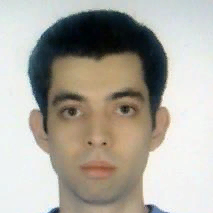
M. M. Zeinali
Work place: Computer Engineering Department, Islamic Azad University, South Tehran Branch, Tehran, Iran
E-mail: st_m_zeinali@azad.ac.ir
Website:
Research Interests: Image Processing, Image Manipulation, Image Compression, Pattern Recognition, Computer systems and computational processes
Biography
Mohammad Mehdi Zeinali received the B.S degree in telecommunications engineering from Islamic Azad University, Shahre Rey branch, Tehran, Iran, in 2009 and the M.S degree in computer engineering from Islamic Azad University, Tehran-South branch, Tehran, Iran in 2014. His research interest is image processing and especially license plate recognition applications.
Author Articles
Application-Oriented Farsi ALPD Using Deterministic Edge Clustering
By M. M. Zeinali Sedigheh Ghofrani A. Sengur
DOI: https://doi.org/10.5815/ijigsp.2015.07.01, Pub. Date: 8 Jun. 2015
In this paper a new application-oriented method for automatic Farsi license plate detection (ALPD), based on morphology and a modified edge clustering algorithm is proposed. Access control (AC), law enforcement (LE), and road patrol (RP) are mainly three applications for ALPD. After image enhancement by preprocessing, the edge statistics analysis and the morphology filter are used to decrease the search regions and remove the unwanted edges. Then the expectation-maximization (E-M) algorithm is used to estimate the corresponding Gaussian components for edges of remained regions. In this way the results of edge clustering and Gaussian components estimation are deterministic whereas the processing time in comparison with similar approaches in literature, is decreased significantly. Candidate regions are obtained by applying application-oriented thresholds to the properties of estimated Gaussian components. Finally for each candidate region, the maximally stable extremal region (MSER) detector is used to detect character-like regions and then select the region(s) of interest containing license plates. The proposed method is evaluated by using a database which includes images for the three groups AC, LE and RP applications, whereas some images suffer of being low quality, low contrast and blur and some images have complex background through existing multiple license plates. The experimental results show that our proposed method is reliable for images of different quality and illumination condition and it is able to detect the rotated and skewed license plates even in images containing multiple license plates and complex backgrounds.
[...] Read more.Other Articles
Subscribe to receive issue release notifications and newsletters from MECS Press journals